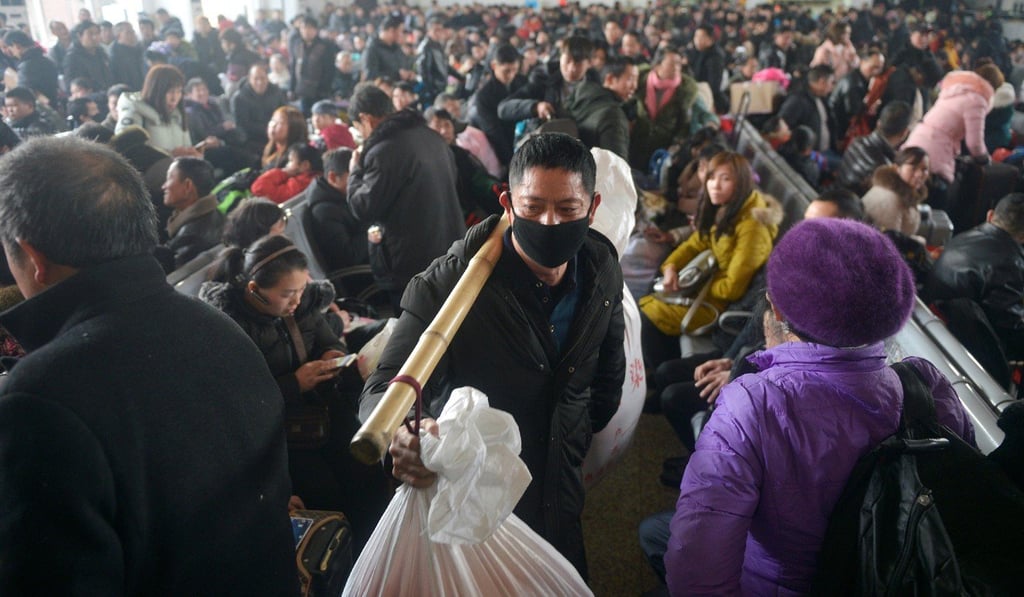China using AI, 5G tech to improve travel experience during annual Spring Festival migration
- The Lunar New Year period sees hundreds of millions of Chinese people return to their hometowns each year
- This year, China is using AI and 5G technology to improve the experience for commuters

At the Hangzhou East Railway Station, passengers who lose their identification cards can get temporary IDs within 30 seconds with the help of facial recognition, according to a report by state media outlet China News Services. The “temporary ID self-service printer” will match the passengers’ faces with their ID numbers and print out the new identification documents, the report said. Previously, passengers had to either queue at staffed counters to get temporary IDs or visit a police station to replace their IDs.
There will also be a security robot powered by fifth-generation mobile network (5G) technology, which will help staff at the railway station to detect suspicious people and behaviour, according to the same report. The robot will use artificial intelligence (AI) to analyse the behaviour of people in the station.
Known as the world’s largest annual mass movement of people, the peak travel period known as chunyun in China typically sees hundreds of millions of Chinese people return to their hometowns to reunite with relatives for the Lunar New Year. January 25 will mark the start of the Year of the Rat this year.

China State Railway Group estimated earlier this month that an average of 11 million train trips will be taken per day, for a total of 440 million rail journeys during the five-week period between January 10 to February 18. This represents an 8 per cent increase from last year’s figure of around 410 million.